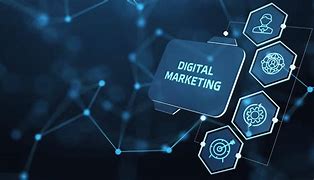In recent years, Artificial Intelligence (AI) in digital marketing has become a game-changer for businesses looking to stay competitive. AI’s impact is profound, from automating key processes to providing personalized experiences for customers. With its ability to analyze vast amounts of data, predict customer behavior, and optimize campaigns, AI is rapidly transforming how brands engage with their audiences and drive results.
Let’s explore the top benefits and trends of AI in digital marketing and how businesses can leverage these technologies to enhance their marketing strategies.
1. AI-Powered Personalization: Creating Tailored Customer Experiences
One of the biggest advantages of AI in digital marketing is its ability to deliver personalized customer experiences. Consumers today expect brands to understand their preferences and deliver content and offers that are relevant to their needs. AI achieves this by analyzing customer data, such as browsing behavior, purchase history, and social media activity, to create hyper-targeted advertising.
For example, AI-driven product recommendations on platforms like Amazon and Netflix use past behavior to suggest products or media that customers are likely to be interested in. This level of personalization increases engagement and drives higher conversion rates, giving businesses a significant edge over their competitors.
2. Chatbots and AI-Powered Customer Service Automation
AI chatbots are revolutionizing customer service by providing instant, 24/7 support. With the ability to handle common inquiries and resolve issues without human intervention, AI chatbots are enhancing the customer experience while reducing operational costs.
By using natural language processing (NLP), these tools understand user queries and provide relevant responses, whether it's answering frequently asked questions or processing orders. Businesses using AI for customer service enjoy faster response times and increased customer satisfaction, while saving time and money.
3. Predictive Analytics in Digital Marketing: Data-Driven Decision Making
AI helps marketers make better decisions by using predictive analytics to forecast customer behavior. By analyzing historical data, AI can identify patterns and trends that predict future actions, such as which customers are most likely to convert or when they’re most likely to purchase.
Predictive analytics allows brands to optimize their marketing efforts by targeting the right audience with the right message at the right time. With AI’s ability to analyze data in real-time, businesses can adjust strategies quickly and ensure maximum effectiveness in campaigns.
4. AI for Content Creation and Marketing Automation
AI is playing a pivotal role in content marketing by streamlining the content creation process. Tools powered by AI, such as GPT-3, can generate human-like text for blog posts, social media updates, and even video scripts, making content creation more efficient and scalable.
Additionally, AI can help with content curation by analyzing consumer preferences and suggesting relevant articles, videos, or blog posts that align with a brand’s target audience. By automating content strategies, businesses can stay consistent with content production and reach their audience more effectively.
5. AI in Advertising: Enhanced Targeting and Retargeting
AI has revolutionized how businesses approach online advertising, especially in terms of targeting and retargeting. With machine learning algorithms, AI can analyze vast datasets to identify the ideal audience for specific products or services, ensuring that ads are shown to users most likely to engage.
Moreover, AI-powered retargeting is key for re-engaging potential customers who have previously interacted with a brand but haven't converted. AI tools automatically optimize ad placements and content to nudge users back into the sales funnel, leading to increased conversion rates.
6. Voice Search Optimization: AI's Role in Voice Commerce
With the rise of voice assistants like Amazon Alexa, Google Assistant, and Siri, voice search optimization has become increasingly important for marketers. AI plays a key role in improving voice search accuracy and helping businesses optimize their content for voice queries.
Voice searches are often more conversational than typed queries, meaning businesses need to adapt their SEO strategies. AI can analyze voice search patterns and recommend changes to a brand’s content to ensure better visibility in voice search results, helping companies stay competitive in the growing voice commerce space.
7. AI for Optimizing Email Marketing Campaigns
Email marketing remains one of the most effective channels for digital marketers. AI is enhancing email marketing by allowing marketers to create personalized email content tailored to each customer’s preferences. By analyzing previous interactions, AI tools can suggest the best subject lines, content, and timing for email campaigns to increase open rates and conversions.
AI also improves email segmentation, ensuring that the right message reaches the right audience at the optimal time. Automation and AI-driven A/B testing allow marketers to refine email strategies for better performance.
8. AI-Powered Visual Recognition for Digital Marketing
AI is also making an impact in the world of visual content. Through image and video recognition, AI tools can analyze visuals, identify trends, and even predict which types of visual content will resonate with audiences. This technology helps marketers optimize their visual content strategies, ensuring they stay relevant to their target market.
For example, AI-driven social media monitoring can help brands identify trending visual content, allowing them to leverage user-generated content and create campaigns that reflect current trends. This use of AI ensures that visual marketing stays dynamic and impactful.
Conclusion: Embrace AI for Digital Marketing Success
The integration of AI in digital marketing is no longer just a trend—it’s an essential tool for brands looking to optimize their strategies and stay competitive. From personalized customer experiences to predictive analytics and automated content creation, AI is reshaping how businesses engage with customers and drive marketing results.
As AI technologies continue to evolve, marketers must stay up-to-date with the latest advancements and adopt AI tools that enhance their digital marketing efforts. By leveraging AI’s power for personalization, automation, and data analysis, businesses can create more effective and efficient campaigns that deliver real, measurable results.
Are you already using AI tools in your digital marketing strategy? Share your thoughts on how AI has influenced your marketing efforts.





